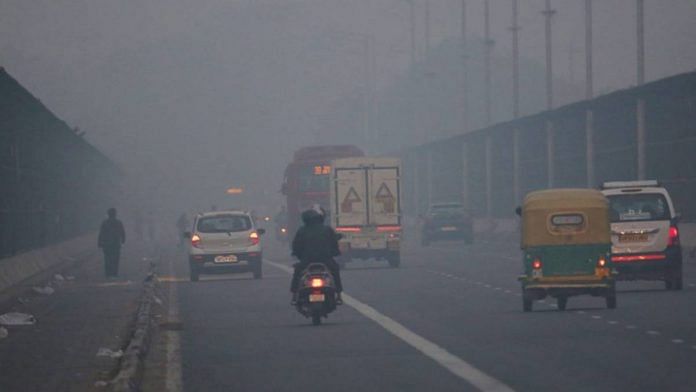New Delhi: An assessment of State Pollution Control Boards (SPCBs) in India’s most polluted region — the Indo-Gangetic plain — has found them woefully ill-equipped to manage air pollution as they are plagued by vacancies, a lack of technical expertise, and “conflict of interest”.
In a series of working papers, the New Delhi-based think tank Centre for Policy Research (CPR) evaluated the institutional health of 9 SPCBs and one Pollution Control Committee — bodies tasked with enforcing pollution norms — only to find that they “do not have the resources and capacity to perform the functions assigned to them under various laws”.
The SPCBs and the Pollution Control Committee evaluated are from Punjab, Haryana, Rajasthan, Delhi, Uttarakhand, Uttar Pradesh, Bihar, Jharkhand, Chhattisgarh, and West Bengal.
For its analysis, the think tank collected a range of information through applications filed under the Right to Information Act in August and September 2021. Among the information sought were the composition of boards, the presence of non-official members, industry, academia and air quality experts, the tenure and qualifications of their last five chairpersons and member secretaries, and the vacancies against currently sanctioned strength.
The CPR report was released Wednesday.
Nine out of 10 bodies evaluated had vacancies of at least 40 per cent. Bihar and Haryana had vacancies of 75 per cent, while for Jharkhand, “vacancy levels for technical positions are as high as 84 per cent”, the analysis found. High vacancy rates have a “significant bearing on the ability of the Boards to monitor industrial compliance”, the CPR said in a statement.
In Jharkhand, Punjab, Uttar Pradesh, and Bihar, for example, environmental engineers have “less than a day to inspect, evaluate and approve” each application to establish and operate industries.
Studies have shown that emissions emerging from the Indo Gangetic plain are responsible for nearly half (46 per cent) of the premature deaths in the country linked to PM2.5. Industries have been found to be significant contributors to air pollution in the region.
“Growing responsibilities have impinged the abilities of pollution control boards to deliver on their existing mandate. This, coupled with the expanding air pollution policy framework, is exacerbating the already stark manpower situation,” Bhargav Krishna, a CPR fellow and one of the authors of the working papers, told ThePrint.
A majority of board members (53 per cent) are represented by government officials and local authorities who are themselves “potential polluters” across the 10 SPCCs and PCC, creating a possible conflict of interest, says the report. Scientists, medical practitioners, and academics make up just 7 per cent of the board members analysed.
The Air (Prevention and Control of Pollution) Act of 1981 requires that at least two members have “special knowledge on or practical experience in matters relating to improvement of air quality or the prevention, control or abatement of air pollution”. But the requirement not met by most boards, the analysis found.
Also Read: You thought only winter meant bad air in Delhi? Govt data tells a different, worrying story
A structural problem
CPR’s findings are in line with other assessments on the state of pollution control boards across the country. In 2020, a committee formed at the behest of the National Green Tribunal found that on average, SPCBs had 46 per cent vacancy, “the chief cause for [their] underperformance”.
The committee’s findings, which is known as the Aryavart foundation report, said the SPCBs were “not well-equipped for the quality assurance in the analysis & data generation at their laboratories”, and “expressed the need for technical guidance and regular professional trainings in [the] effective discharge of their functions”.
Another study by the Centre for Chronic Disease Control came up with similar findings.
The formation of State Pollution Control Boards and Pollution Control Committees is mandatory under the Water (Prevention and Control of Pollution) Act, 1974. The Act stipulates that SPCBs have 15 members, with government officials and local authorities occupying up to 5 spots each.
Up to three spots are for “non-official” representatives having various interests such as agriculture or fishery, and up to two spots are reserved for state-owned corporations and companies — some of whom are polluting entities, according to CPR.
“Some conflict of interest can be remedied immediately by including a greater diversity of members on the board, but in the long term there is a need to examine whether the current structure of the Boards as stipulated under the Water and Air Acts is fit for purpose,” Krishna told ThePrint.
(Edited by Uttara Ramaswamy)
Also Read: One gas stove can expose you to more pollution than an entire highway of vehicles



